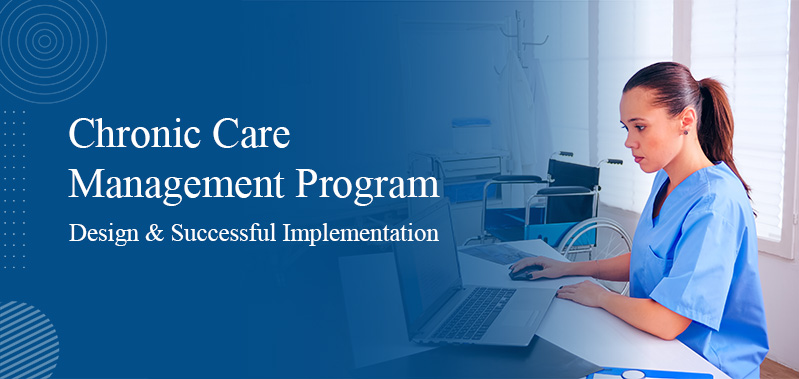Top 7 Ways To Improve Patient Safety In Hospital
As a part of the vast U.S. healthcare system, your every single work impacts other's health. That's why your interest in patient safety landed you on this page. As a healthcare provider, it's important for you to prioritize patients' well-being and safety. The healthcare community is continuously evolving and encouraging many rooms of change. With the expansion of hospitals, clinics, and more, it's also crucial to pay more attention to patient safety.
By implementing actionable steps and robust methodologies of patient safety, hospitals can minimize risks and security breaches and improve the overall well-being of patients. Read on to effective ways of improving patient safety in hospitals.
Patient Safety in Hospitals
You might think that hospitals are the safest place for patients but are not aware that they grapple with lurking dangers. As per a 2016 study by Johns Hopkins University, it has been found that medical errors in hospitals are one of the leading causes of death in the U.S. However, medical errors can be eradicated using proper safeguards and medical staff training.
WHO has defined patient safety as "a framework of organized activities that creates cultures, processes, procedures, behaviors, technologies and environments in health care that consistently and sustainably lower risks, reduce the occurrence of avoidable harm, make the error less likely and reduce the impact of harm when it does occur." So, there's no magic pill; instead, hospital procedures should be revised to ensure patient safety and proper staff training to provide patients with a safe place of care- hospitals. Along with this, hospitals must be aware of the regulatory standards, such as compliance with the Joint Commission rules and regulations and fulfilling national patient safety goals. In various ways, patient safety issues can be fixed, and some of the top factors have been noted below.
7 Ways To Improve Patient Safety In Hospital
No matter what the size of your hospital is and how many staff are enrolled there, patient safety is something that you shouldn't compromise with. Here, we have discovered some of the top ways on how to improve patient safety in hospitals.
1. Implementing Advanced Technology
Integrating cutting-edge technology such as electronic health records (EHRs), barcode medication administration systems, and automated patient monitoring can significantly reduce errors and improve patient safety by providing real-time information and alerts to healthcare providers. Hospitals are employing technology like bed alarms for fall alerts and barcode systems to confirm patient medication, both aimed at enhancing patient safety without drawing attention to their presence.
2. Prioritizing Patient-Centered Care
Ensuring patient safety isn't solely the responsibility of healthcare providers; patients being informed about their care is crucial in error prevention. While patients don't need to match healthcare professionals' knowledge, having a basic grasp of their treatment and associated risks is beneficial. Hospitals should prioritize patient-centered care by actively involving patients and their families in decision-making processes, providing thorough explanations of treatment plans and potential risks, and soliciting feedback to improve the quality and safety of care continuously.
3. Enhanced Staff Training and Education
Hospitals can invest in comprehensive training and educational programs to ensure all staff members, from nurses to physicians to administrators, are well-versed in patient safety protocols. This includes training on infection control, medication administration, communication techniques, and emergency response procedures. Training programs efficiently empower hospital staff to enhance patient safety on the premises and comply with the current changes in treatment procedures and regulations.
4. Enhancing Infection Control Practices
Robust infection control measures, including hand hygiene protocols, isolation precautions, and environmental cleaning procedures, are essential for minimizing the spread of healthcare-associated infections (HAIs) and ensuring patient safety within hospital settings. Basic actions like handwashing greatly influence patient safety. According to the CDC, hand hygiene is pivotal in halting germ spread and hospital infections. Their Clean Hands Count initiative advises healthcare providers to use hand sanitizer and discuss hand hygiene with patients, empowering them to inquire about handwashing compliance.
5. Establishing Clear Communication Channels
Hospitals should establish clear communication channels among healthcare teams, patients, and their families. This includes regular interdisciplinary meetings, standardized handoff procedures during shift changes, and encouraging open dialogue to address concerns and share vital information effectively.
6. Strengthening Medication Safety Measures
Hospitals can implement medication reconciliation processes, barcode scanning systems for medication administration, and standardized protocols for prescribing, dispensing, and administering medications to prevent errors such as incorrect dosages or drug interactions. Furthermore, hospitals must develop an atmosphere of accountability as in a safety-focused culture; staff are encouraged to report near-misses and errors without fear of consequences. By setting up reporting systems, conducting root cause analyses, and implementing corrective actions, a blame-free environment is nurtured, enabling learning from mistakes and averting future incidents.
7. Implementing Quality Improvement Initiatives
Continuous quality improvement initiatives, such as regular audits, incident reporting systems, and root cause analysis of adverse events, are crucial for identifying areas for improvement and implementing targeted interventions to enhance patient safety outcomes over time. Moreover, compliance with the regulatory body standards, including the Joint Commission, and designing hospital principles based on them also improves overall patient safety.
Final Thoughts
Hospitals face critical patient safety challenges such as patient identification, medication errors, adverse events, and infections, impacting lives and costs. Amid these challenges, healthcare technology offers valuable support, streamlining processes amidst staffing shortages and high labor costs. Effective patient safety initiatives necessitate a pervasive hospital-wide safety culture, not just isolated actions but integrated standards across all care aspects, akin to quality measures.




